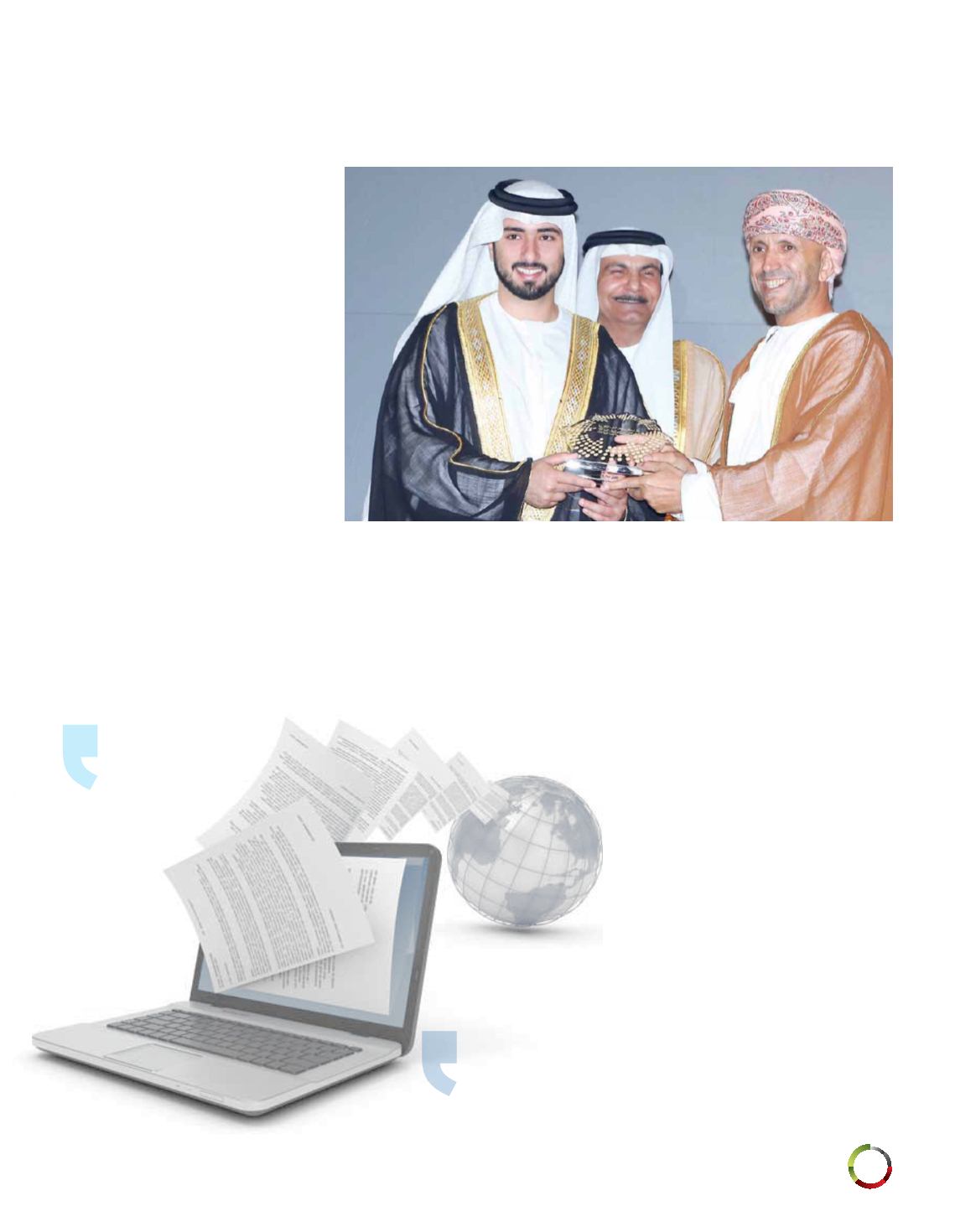
new to the public. Therefore, Oman’s
government collaborated with the IT Au-
thority to raise awareness of eServices;
side by side to developing those services
and realizing eTransformation.
During the past period, we have estab-
lished 19 centers across Oman to edu-
cate employees on the nature of eSer-
vices and how to use them. 70 thousand
government employees were trained on
how to deal with the services as users
and providers.
In terms of raising the public awareness,
we have distributed 100 thousand PCs to
people who are completely far from the
technology. The aim is to attract those
people to use eServices.
The Omani government is focus-
ing on eTransformation amid the
current drive on global and GCC
levels towards mTransformation;
what are your future plans for this
kind of transformation?
The past five years have seen a rapid de
-
velopment in technology and information
technology. Moving from websites trend,
which have drawn attention for quite some
time, to mobile apps for smart phones and
tablets, in was necessary to exert paral
-
lel efforts in order to develop government
e-presence and m-presence through apps
stores for mobile phones and tablets. This
has been taken into consideration by the
Omani government and, hence, focus was
directed to achieve this goal.
Certainly, mServices have become inevi
-
table, particularly that the rate of mobile
phone subscribers in Oman reached 200
percent, half of them carry smartphones.
This resulted in the need to make govern-
ment services available to this growing
segment.
Which is the keymService project un-
dertaken by the Omani government?
The most important eServices and eProj-
ects are those that meet the public’s daily
needs and interests. The key project in
this respect, is the “Consumer e-Guide”
of Oman’s Public Authority for Consumer
Protection.
Last year, the smart version of the appli-
cation was launched for smartphones and
tablets aiming to enhance service provi-
sion channels, boost relationship with the
public, enable them to keep pace with
the latest technologies related to mobile
phones and service provision channels,
allow consumers to access more servic-
es through mobile phones including price
analysis, lodging complaints, latest news
and contact details.
Have you measured the usage rate
of the mGuide?
During 2012, the mGuide received
23,537 complaints and reports raised by
the public, based on which 8,099 fines
were issued.
After the launch of the smart guide for
smart phones and tablets, the app was
downloaded on various operating sys-
tems, including 41.000 on Android,
45.000 on iOS, 2500 on Blackberry and
1500 on Window Phone.
public awareness
is key factor to
eServices success
mTransforma-
tion in parallel to
eTransformation
21
March
2014


